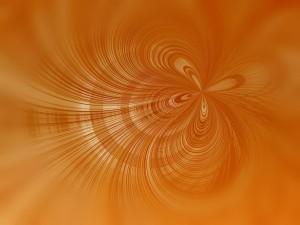
Strange isn’t the word for cesium auride. Gold in liquid form? Indeed, yes! Discovered more than a half century ago, the properties of this cesium and gold compound are not yet fully understood.
There are all sorts of curios in chemistry. Chemists love them dearly. I still remember one particularly strange molecule. It was affectionately named hexamethyl bathroom tile.
Free Lectures
Recently I listened to some free online chemistry lectures. They were produced by MIT under its OpenCourseWare program. One of those lectures spoke of an alloy of cesium and gold that acts like a salt, cesium auride. Key to its forming is the difference in electronegativity between cesium and gold. It is roughly the same as the difference between sodium and iodine!
Formation
An atmospherically protected melt of cesium and gold on approaching stoichiometric amounts (50:50) quickly changes by electron transfer from the electropositive cesium atoms to the gold atoms, forming Cs+ and Au⁻ ions. The ions indicate it is indeed an ionic substance. But what is so special is that the gold does not take a positive ionic form, but a negative one. As a result, the melt changes from metallic yellow to clear yellow, solidifying into an orange crystalline sold.
Properties
CsAu was first discovered in 1943. It has a cesium chloride type structure. It melts at 863 degrees C. The compound’s electrical properties lie between those of a metal and those of an ionic solid. Cesium auride is thus a semiconductor. It is useful in the formation of specialty electronic devices.
The ionicity of cesium auride was confirmed from an analysis of the relativistic Hartree-Fock wavefunction. The catch is the compound reacts vigorously with water to form gold metal and cesium hydroxide. So moisture must be carefully avoided. A rubidium counterpart, RbAu, has also been described.
Cesium Auride Derivatives Undergoing Study
Cesium auride has been reacted in liquid ammonia solvent with a high cesium affinity macroreticular ion exchange resin producing tetramethylammonium auride, (CH3)4NAu.
Yet another modification derivative is cesium auride oxide, Cs3AuO.
Other cesium and gold molecular combinations more recently discovered are undergoing study.
Note: You might also enjoy Hydrogen Metal?
References:
- Max Planck Institute for Solid State Research: Aurides
- Other Interesting Cesium Compounds
- Semiconductor materials
- Advances in Inorganic Chemistry and Radiochemistry
- Effects of relativistic motion of electrons on the chemistry of gold and platinum
- Modern Supramolecular Gold Chemistry: Gold Metal Interactions and Applications

Is there an analogous effect with the inner transition metals by formation of caesium thulide?
I feel it highly unlikely, John. However, you might enjoy this article that does mention another, similar concoction (if I may be allowed to use the term). It discusses the compound CsPt2. Here’s the URL: http://www.sciencedirect.com/science/article/pii/S129325580500230X
Minor corrections: That should be Au⁻¹ ions, not Au⁻². CsAu is transparent orange solid, not a colorless liquid, below its melting point of 580⁰ C. Cesium auride oxide is Cs₃AuO, not CsAuO.
Andy… Much appreciated corrections. I desire accuracy in everything I convey. My best to you.
The Bible mentions “Transparent Gold”, wonder if there’s a correlation. Too bad both elements are so rare/expensive, it would be nice to make some.
Dear Vincent,
Very belatedly, many thanks for your interesting reply.
Aside from the ‘inert pair’ effect, it seems from Jansen’s paper that Au and Pt achieve their anionic ‘trick’ by filling up their d-shells. It was this consideration that made me think that Tm, with 13 f-electrons, would readily attract an electron to form a full 14 f-shell. Has it been tried?